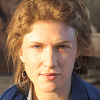Top 2 Ways to Restore System Image without Repair Disc [Windows 10/11]
Want to restore a system image but don't have a repair disc? In this article, we'll show you the top 2 ways to restore a system image without a repair disc easily and effectively.
“Hello. I've created a system image and was trying to restore it. I did not have a blank disc, so I did not create a system repair disk. I got into Advanced startup > Troubleshoot > Advanced options > System Image Recovery After selecting the system image, the computer asks for a system repair disc, which I do not have. As far as I know, this used to be the only way to restore a system image without a system repair disc, is it still possible now? ”
– Microsoft Community
When your computer faces issues, a system image backup can be a lifesaver. It restores your system to a previous working state, avoiding the need to reinstall everything from scratch. But what if you don’t have a repair disc at hand? In this guide, we'll walk you through the top 2 ways to restore a system image without a repair disc, which is available for Windows 10/11, helping you recover your system even when you're in a pinch.
Preparations to Restore System Image
Before diving into how to restore system image without repair disc, there are a few essential preparations you need to make sure you’re ready for a smooth recovery. Here’s what to do:
Locate your system image backup: You’ll need to know where your system image backup is stored. It’s usually saved on an external hard drive, network location, or cloud storage. Ensure it’s accessible before you start the restoration.
Backup important files: While restoring a system image should retain your data, it’s always a good idea to back up any files that you can’t afford to lose. This is especially important if you’re using a recovery method that might overwrite existing data.
Best free Windows backup software to safeguard essential data during the restoration process.
Ensure you have a bootable recovery method: If you don’t have a repair disc, you’ll need an alternative method to boot into recovery mode, such as a bootable USB drive.
Best Solution to Restore System Image without Repair Disc
When it comes to restoring a system image without a repair disc, AOMEI Backupper Standard is one of the best tools available. AOMEI offers a user-friendly interface and an intuitive set of features to help you restore your system image easily.

-
Bootable Media Creation: One of its standout features is the ability to create a bootable USB or CD/DVD, which can be used for recovery without the need for a separate repair disc.
-
Create Recovery Media on Another Computer: With AOMEI Backupper, you can easily create a system recovery disk on a functional computer and use it to boot a problematic system. This is especially useful if your system crashes before you’ve made a recovery drive.
-
Reliability: The software is known for its reliability in creating and restoring system image backups, with a high success rate and minimal risk of data loss.
-
Easy to Use: AOMEI Backupper offers an easy-to-navigate interface that simplifies the backup and restore process, even for beginners.
How to Create a Windows Boot Repair Drive via AOMEI Backupper
1. First of all, you should connect a USB drive to your computer. Then, launch AOMEI Backupper, select Tools, and choose Create Bootable Media from the main interface.
2. Then, select Windows PE – Create bootable disc based on Windows PE and click Next.
3. Choose the USB Boot Device to create this system bootable recovery media and click Next to start the process.
With AOMEI Backupper, you can create a system recovery USB to boot your computer easily.
Advanced Features You May Need (Professional Edition):
Universal Restore: If you haven’t created a system backup before the failure, you can still create a system image on another working computer and restore it to the problematic PC using the Universal Restore feature. This ensures compatibility even when the hardware is different.
No CD/DVD or USB Drive Needed: Don’t have a USB drive or CD/DVD? You can enable the AOMEI recovery environment directly on the system. This option provides the same functionality as a recovery disk without the need for external media.
How to Restore the Operating System via the AOMEI Bootable Drive
1. Connect the external drive containing your system image backup and the recovery USB created with AOMEI Backupper to your computer.
2. Click “Restore” and then select “Select Image File” to locate the system image you created earlier.
3. Select “Restore this system backup” and click “Next” to proceed.
4. Choose the destination disk where you want to restore the system image. If you’re using a new disk, ensure it’s connected before starting the process, then click “Next.”
- Notes:✎...
- If the destination disk is an SSD, check the “SSD Alignment” option to optimize the disk’s performance.
5. Click “Start Restore” to begin the process. AOMEI Backupper will restore your system image, returning your computer to its previous working state.
Restore System Image without Repair Disc by Media Creation Tool
Another excellent option for restoring your system image is by using the Media Creation Tool. This method leverages Microsoft’s built-in recovery tool to create a Windows recovery USB drive, which can be used to restore the system image without needing a repair disc.
How to Create Windows Recovery USB with Media Creation Tool
1. Plug the USB drive into your computer and download the Windows Media Creation Tool from Microsoft’s official website.
2. Once the MediaCreationTool.exe file has been downloaded, right-click on it and select “Run as administrator” to start the process.
3. When prompted with “What do you want to do?”, select “Create installation media for another PC” and then click “Next.”
4. By default, the tool selects the language, edition, and architecture for Windows based on your current system. If needed, uncheck “Use the recommended options for this PC” to customize these settings.
5. Choose “USB flash drive” as the installation media option and click “Next.”
6. The tool will display a list of removable drives connected to your computer. Select your USB drive from the list and click “Next” to begin creating the bootable Windows 11 recovery USB.
After the process is completed, your USB drive will be ready to use as a recovery tool.
How to Restore Windows System with Media Creation Tool
1. Insert the recovery USB drive into your computer, then restart it and press the appropriate key to boot from the USB.
2. Once your computer boots into the Windows setup screen, select Repair your computer instead of installing Windows.
3. Choose Troubleshoot > Advanced options > System Image Recovery.
4. Select your operating system and follow the on-screen prompts to restore the system image from the backup location.
Troubleshooting System Image Restoration without Repair Disc
While the methods above are straightforward, you might encounter a few issues during restoration. Here are some common problems and solutions:
System Image Not Found: Ensure the backup is accessible. If it's stored on an external drive, ensure it's properly connected before booting from the recovery media.
Failed Bootable Media Creation: Double-check that the USB drive is properly functioning and formatted. If AOMEI or Media Creation Tool fails to create the media, try using a different USB stick.
System Image Corruption: If the system image is corrupted, you may not be able to restore it. In such cases, having an alternative backup (cloud storage or external hard drive) can be a lifesaver.
Incompatible Hardware: If you’re restoring to a different machine with different hardware, you might run into driver issues. Ensure that the system image is compatible with your current hardware configuration.
Summary
Restoring a system image without a repair disc in Windows 10/11 is easier than you might think, especially when you use tools like AOMEI Backupper or the Windows Media Creation Tool. AOMEI Backupper offers a reliable and user-friendly method to create bootable media and restore your system image, while the Media Creation Tool provides a Microsoft-backed recovery option. Both methods are effective for getting your system back to normal, even when a repair disc is unavailable.
By following these simple steps, you can quickly restore your operating system, minimizing downtime and avoiding the hassle of a fresh installation. Be sure to always back up your system image and keep your recovery tools handy for future emergencies.

